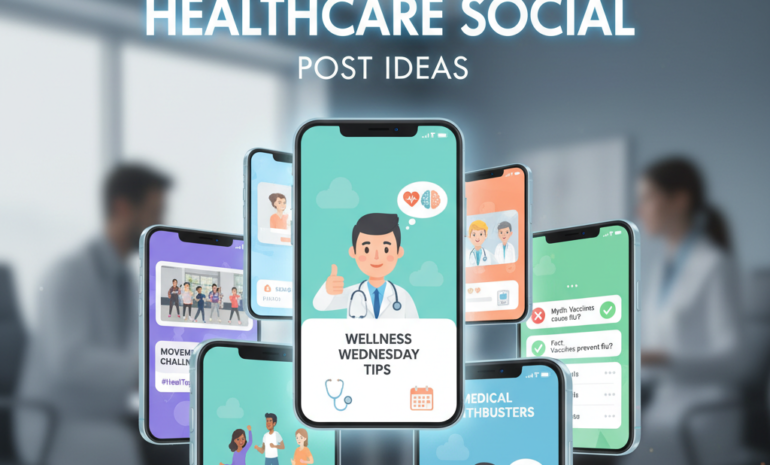Deciding between native vs hybrid app development can shape how your product performs, how much it costs, and how users respond to it.
Some businesses want the best speed and features, while others focus on faster delivery and cost savings. This article compares both methods clearly.
You will find what each one means, how they differ, and what business goals each suits. Knowing the strengths and weaknesses of both native and hybrid development helps make better choices.
This way, you do not end up with an app that is too expensive to maintain or too slow to attract users.
What Is Native App Development?
Native app development means creating apps specifically for one platform like iOS or Android. Developers use languages that match the platform, Swift or Objective-C for iOS, and Kotlin or Java for Android.
These apps work smoothly because they connect directly with the device’s hardware and system features. Native apps tend to be faster, more secure, and feel more polished.
They give developers access to the latest tools from Apple or Google, which allows quick updates and support for new features. The downside is that building separate apps for iOS and Android takes more time and budget.
Still, if your goal is to create a high-performance app with the best user experience, going native is the better choice.
Businesses that rely on smooth animations, camera use, GPS, or real-time updates usually prefer native development because the performance and reliability are worth the higher development effort.

Pros of Native App Development
- Fast performance and smooth operation
- Better user experience with platform-specific design
- Full access to device features like camera, GPS, sensors
- Stronger security and better data protection
- Easier to scale and handle future updates
- More reliable for complex and high-traffic apps
- Supports offline features more efficiently
- Direct access to latest platform tools and updates
Cons of Native App Development
- Higher development cost (two separate apps)
- Longer time to build and launch
- Requires larger or more specialized development team
- More maintenance effort across platforms
- Not cost-effective for simple or short-term apps
- Slower time to market compared to hybrid apps
- Duplicated effort for features across iOS and Android
- Updates must be made separately for both platforms
What Is Hybrid App Development?
Hybrid app development allows you to write one codebase that works on both iOS and Android platforms. These apps are built using web technologies like HTML, CSS, and JavaScript, and then wrapped in a container that makes them behave like native apps.
Popular frameworks for hybrid apps include Flutter, React Native, and Ionic. One major benefit of hybrid development is cost savings, there is no need to hire two separate development teams.
It is also faster to build and update hybrid apps because changes are made once instead of twice. However, hybrid apps might feel a bit slower or less responsive, especially with animations or complex features.
They are a good option for simple business apps, content-driven platforms, or when you want to test a product idea quickly.
Businesses that care more about quick market entry and lower costs often pick hybrid apps, especially if the app is not too feature-heavy or dependent on device-specific functions.
Pros of Hybrid App Development
- Single codebase works for both iOS and Android
- Faster development and quicker launch
- Lower development cost
- Easier to maintain and update
- Good for simpler or content-based apps
- Suitable for MVPs and testing product ideas
- One team can handle the entire project
- Updates roll out faster across platforms
Cons of Hybrid App Development
- Slower performance compared to native apps
- Limited access to device features
- Less smooth user experience
- May feel inconsistent across platforms
- Tougher to scale for large or complex apps
- Some platform-specific bugs can be harder to fix
- Not ideal for high-performance apps like games
- Depends heavily on third-party frameworks

Performance and Speed Comparison
Native apps clearly have the upper hand when it comes to speed and performance. Since they are built for a specific platform, they interact directly with the device’s processor, camera, and memory.
This means smoother animations, faster load times, and fewer bugs. On the other hand, hybrid apps run through an additional layer, which slows things down slightly.
For simple apps, this difference may not matter much, but in more complex systems like gaming or real-time tracking, native apps handle pressure better.
Think of it like this: native apps drive on a direct road, while hybrid apps take a detour. Businesses that rely on real-time interactions, such as taxi services or eCommerce platforms with live updates, benefit more from native apps.
While hybrid apps can perform well in many cases, they often cannot match the seamless performance that native apps offer, especially when an app becomes large or needs access to deeper system features.
Development Cost and Time
Budget and time are key factors when choosing between native and hybrid development. Hybrid apps generally cost less because you only need one team to build and maintain the app for both platforms.
Updates are faster, and development cycles are shorter. In contrast, native apps require separate teams for iOS and Android, which increases both the timeline and the budget.
For startups or small businesses working with limited funds, hybrid apps provide a practical way to launch an app quickly. However, cutting costs can also cut corners.
If your app will eventually grow and add more features, the long-term maintenance of a hybrid app might cost more than expected.
Also, if the app starts feeling slow or clunky, you may need to rebuild it natively later. So, think beyond launch, your choice today affects not just development, but also support, updates, and future changes.

User Experience and Interface Quality
The experience users get from an app often decides how long they stay and how much they engage. Native apps win in this area because they follow the design rules of each platform.
Buttons, scrolls, gestures, and transitions feel natural because they are made specifically for iOS or Android. Hybrid apps can still offer a good user experience, but the design might not feel perfectly aligned with what users expect.
Small differences in how things look or respond can add up. This matters more for apps that people use daily, like social platforms, finance tools, or fitness apps.
If your app demands trust, smooth interactions, and looks polished, native development gives better results. Hybrid apps are not bad, they just have limits.
Businesses must weigh how important user experience is. If your users are tech-savvy or you are entering a competitive market, the quality of experience can make or break your app’s success.
When to Choose Native App Development?
Native development is the better route when performance, speed, and user experience are top priorities. It is a smart choice for apps that need to work with hardware like cameras, GPS, or sensors.
Large-scale platforms like banking apps, social media tools, or games benefit from the control and speed native development offers.
Also, if you want your app to grow over time with frequent updates, native makes it easier to use new platform features as soon as they come out. It might cost more at the start, but the long-term gain often balances that out.
For businesses planning to stay in the app market for the long run and needing top performance, native apps provide the flexibility, polish, and reliability that hybrid apps sometimes struggle to match.
When your brand depends on how well the app works, native development is the safer and more powerful option.

When to Choose Hybrid App Development?
Hybrid development works best for businesses that want a fast and affordable entry into the app world. If your app is mostly content-driven, such as blogs, service listings, or basic tools, then hybrid saves you both time and money.
It is ideal for startups testing out an idea before going full scale. You can build once, launch on both iOS and Android, and adjust based on user feedback.
For simple features and minimal animations, a hybrid is often good enough. It also allows quicker updates and faster bug fixes across platforms.
If your app does not rely heavily on device hardware or complex real-time actions, hybrid development is a practical choice. Many businesses start with a hybrid to test the waters and later shift to native when the product gains traction.
This approach gives flexibility without the need for a heavy investment upfront.
Why Choose BrandOut for App Development?
BrandOut offers app development services that focus on real results. We build fast, reliable apps that fit your business needs whether native or hybrid.
From design to launch, every step is handled carefully. Our apps are user-friendly, quick to load, and easy to maintain. If you want an app that performs well, BrandOut delivers with confidence.
Conclusion:
Choosing between native and hybrid app development depends on your business needs, budget, and long-term goals. Native apps give you better speed, stronger performance, and a polished user experience, but they require more time and money.
Hybrid apps let you build quickly for both platforms, making them ideal for simple apps or early-stage ideas. The decision becomes easier when you are clear about what your app must do and how much you can invest.
There is no one-size-fits-all answer. Take the time to match your goals with the strengths of each approach, and you will end up with an app that fits your business not just your budget.
Most asked questions:
Which is better, native or hybrid app?
Native apps offer better speed, performance, and a smooth user experience. Hybrid apps are quicker to develop and cost less since one code works on both iOS and Android.
If your app is complex and performance matters, native is better. If you want to launch quickly and save money, hybrid is a smart choice.
Is WhatsApp a native or hybrid app?
WhatsApp is a native app. It is built separately for Android and iOS using platform-specific code. This helps it deliver fast message delivery, media sharing, and real-time updates without delays.
Being native allows WhatsApp to access phone hardware directly, which improves performance and makes the app more reliable and secure across devices.
Is Amazon app native or hybrid?
The Amazon shopping app is mostly native. It uses native development to offer smooth navigation, fast loading, and secure payment features.
Some parts, like product pages, may use web views, but the core experience is native. This helps Amazon handle large data loads and provide real-time updates without performance issues on mobile.
Is YouTube a native app or hybrid app?
YouTube is a native app. It is developed specifically for Android and iOS to handle video streaming efficiently.
A native setup allows better video playback, fewer crashes, and more seamless use of device features. The speed, reliability, and performance of YouTube rely on native development to handle heavy multimedia content.
Is Netflix a hybrid app?
Netflix combines both native and web technologies. The app interface and streaming functions are built natively for smooth performance. However, some content screens may use hybrid techniques like web views.
The core experience, especially video playback and downloads, is handled through native code to ensure speed, stability, and high-quality streaming.
Is Spotify a native app?
Spotify is a native app designed for both Android and iOS. It uses native code to ensure fast music streaming, offline mode, and seamless background play.
This approach helps Spotify deliver consistent audio quality, fast performance, and better integration with device features. Native development also supports regular updates and new feature rollouts.




